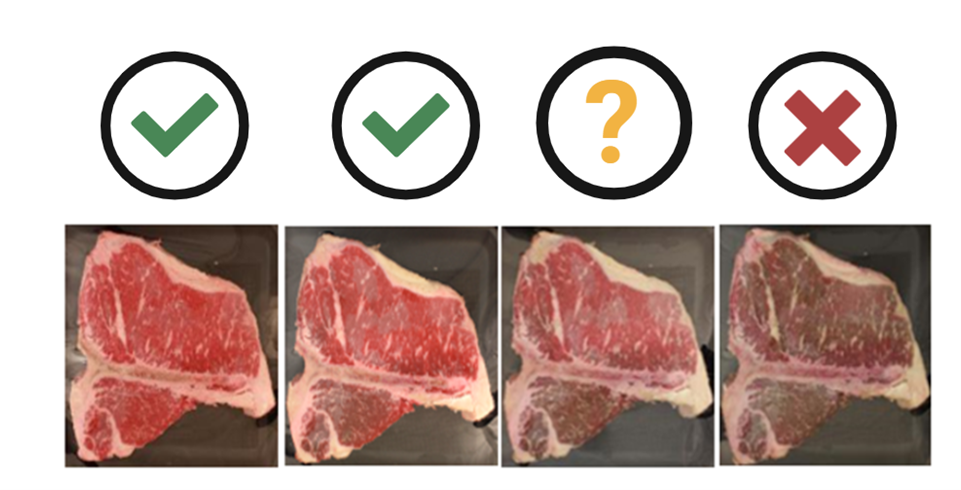BACKGROUND
Meat is a vital food source, rich in protein, minerals, and vitamins, that form a critical component of the human diet. However, meat quality and freshness are largely determined by its color, which consumers worldwide use as a primary indicator when making purchasing or meat use decisions. The red color of fresh meat primarily originates from the balance between oxymyoglobin and metmyoglobin, with discoloration leading to brown hues that signify reduced freshness and quality. This presents a major challenge for the meat industry, costing an estimated 4 billion in losses annually in beef alone, contributing to considerable food waste and resource inefficiency.
SUMMARY OF TECHNOLOGY
Researchers at Oklahoma State University have developed a novel electroanalytical diagnostic tool that monitors meat discoloration by detecting specific redox changes using square wave voltammetry. This tool identifies a signature electrochemical peak, which correlates with the accumulation of oxidizable species and the progression of meat discoloration. By immobilizing meat extracts on graphite electrodes, the device offers rapid, sensitive, and cost-effective detection of freshness biomarkers such as oxymyoglobin degradation and metmyoglobin formation. Additionally, the sensor can respond to additives like NADH and ascorbic acid that delay discoloration, demonstrating its capability to probe biochemical changes influencing meat quality. This technology provides a simple, portable, and efficient method for real-time meat quality assessment, reducing spoilage and food waste.

POTENTIAL AREAS OF APPLICATION
- Food Service Distributors & Cold Chain Logistics- En Route Meat Monitoring
- Institutional Cafeterias- Reduce Food Waste & Food-Borne Illness
- Food Quality Testing Laboratories- Mobile Testing & Reduced Time/Cost
- Grocery & Food Stores- Butchers Department/Meat Freshness
- Meat Packing Comapanies- Cheaper & Enhanced Spectrophotometry Alternatives
MAIN ADVANTAGES
- Real-Time Meat Quality Monitoring- Rapid & Sensitive Discoloration Detection
- Lower Operation Costs- Cheaper than Spectrophotometry
- Portability & On-Site Testing
- Imbedded Preservative Testing- Anti Discoloration Additives
- Simple Integration with Existing Laboratory Protocols
- Waste Reduction & Improved Meat Safety
STAGE OF DEVELOPMENT